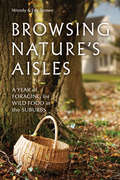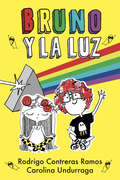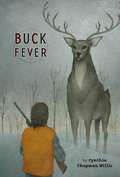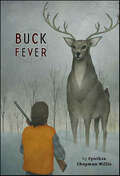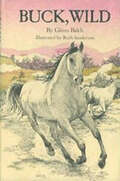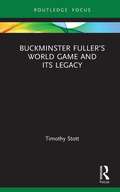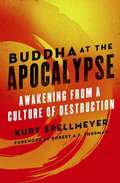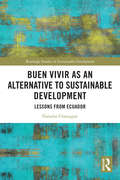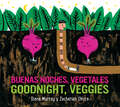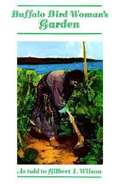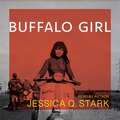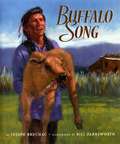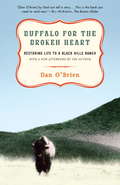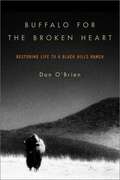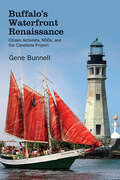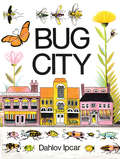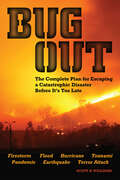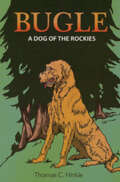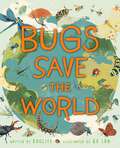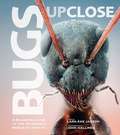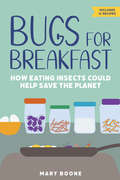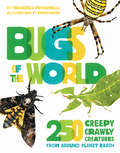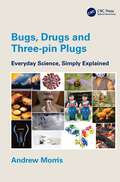- Table View
- List View
Brownie Groundhog and the February Fox
by Susan BlackabyOn the second day of February, a groundhog named Brownie wakes up. She shoves aside the fluff of snow blocking her door. Her shadow stretches across the frosted field. Brownie stomps her foot. "Phooey!" she says. "Six more weeks of winter!" But winter is the least of Brownie's troubles. A hungry fox is hot on her trail, and he certainly doesn't plan to wait until spring for his next meal. When clever Brownie finds a way to outfox him, she is surprised to discover that an unusual new friendship and the first signs of spring appear where she least expects them.
Browsing Nature's Aisles: A Year of Foraging for Wild Food in the Suburbs
by Wendy Brown Eric BrownThis guide to suburban foraging shares the “inspiring journal of one family’s effort to break free from manufactured foods and transition to . . . wild fare” (Thomas J. Elpel, author, Botany in a Day).As part of their commitment to increasing self-reliance and resiliency, Wendy and Eric Brown decided to spend a year incorporating wild edibles into their regular diet. Their goal was to use native flora and fauna to help bridge the gap between what their family could produce and what they needed to survive. The experience fundamentally changed their definition of food.Packed with a wealth of information on collecting, preparing, and preserving easily identifiable wild edibles found in most suburban landscapes, Browsing Nature s Aisles is the story of one suburban family s adventures in wild foraging. This unique and inspiring guide is a must-read for those who wish to enhance their food security by availing themselves of the cornucopia on their doorstep.
Bruno y la luz
by Rodrigo Contreras Carolina UndurragaEl segundo título de la serie de ficción que acerca la ciencia a l@s niñ@s En esta segunda entrega, Bruno recibe de regalo un telescopio, que resulta ser ¡una verdadera máquina para viajar en el tiempo! Así, y con la ayuda de su sabio amigo Hidrógenes, descubrirá el mensaje que trae la luz de las estrellas: un secreto que ha viajado por miles de millones de años y que guarda la historia del universo. Además, resolverá preguntas que se ha hecho siempre: ¿por qué el cielo es azul?, ¿por qué titilan las estrellas?, ¿por qué un zancudo puede picar a un humano a pesar de estar en una pieza completamente oscura? La serie continúa en: Bruno y las estrellas. Este libro explicará qué son las estrellas, cómo nacen, cuánto tiempo viven y cómo, a partir de su existencia, se crean todos los otros átomos que no aparecieron en el Big Bang y que dieron vida a nuevas estrellas y planetas. Bruno y la vida en el espacio. En esta aventura, Bruno viaja a la estación espacial internacional, donde viven los astronautas, a 400 kilómetros de la Tierra. ¡Imagina cómo es observar la vida en gravedad cero!
Buck Fever
by Cynthia Chapman WillisTwelve-year-old Joey MacTagert's dad wants his son to carry on the family tradition of hunting. But Joey has buck fever -- he can't pull the trigger on a deer, and hates the idea of killing animals. He's more interested in art and hockey, two activities that his dad barely acknowledges. Joey's dad wants him to use his special skill in tracking to hunt down the big antlered buck that roams the woods near their home. Joey knows how to track Old Buck, but has kept secret from his father the reason he's gained the deer's trust. When trouble between his parents seems to escalate, Joey and his older sister, Philly, find themselves in the middle of tensions they don't fully understand. Joey wants to keep the peace, and if conquering his buck fever will do it, he has to try.
Buck Fever
by Cynthia Chapman WillisTwelve-year-old Joey MacTagert's dad wants his son to carry on the family tradition of hunting. But Joey has "buck fever"—he can't pull the trigger on a deer, and hates the idea of killing animals. He's more interested in art and hockey, two activities that his dad barely acknowledges. Joey's dad wants him to use his special skill in tracking to hunt down the big antlered buck that roams the woods near their home. Joey knows how to track Old Buck, but has kept secret from his father the reason he's gained the deer's trust. When trouble between his parents seems to escalate, Joey and his older sister, Philly, find themselves in the middle of tensions they don't fully understand. Joey wants to keep the peace, and if conquering his buck fever will do it, he has to try.Buck Fever is a nominee for the 2003 Edgar Award for Best First Novel.
Buck, Wild
by Glenn BalchTraces the first four years in the life of a wild mustang stallion with an unconquerable urge to be free.
Buckminster Fuller’s World Game and Its Legacy (Routledge Focus on Art History and Visual Studies)
by Timothy StottThis book studies R. Buckminster Fuller’s World Game and similar world games, past and present. Proposed by Fuller in 1964 and first played in colleges and universities across North America at a time of growing ecological crisis, the World Game attempted to turn data analysis, systems modelling, scenario building, computer technology, and information design to more egalitarian ends to meet human needs. It challenged players to redistribute finite planetary resources more equitably, to ‘make the world work’. Criticised and lauded in equal measure, the World Game has evolved through several formats and continues today in correspondence with debates on planetary stewardship, gamification, data management, and the democratic deficit. This book looks again at how the World Game has been played, focusing on its architecture, design, and gameplay. With hindsight, the World Game might appear naïve, utopian, or technocratic, but we share its problems, if not necessarily its solutions. Such a study will be of interest to scholars working in art history, design history, game studies, media studies, architecture, and the environmental humanities.
Buddha at the Apocalypse
by Kurt Spellmeyer Robert ThurmanTimely and audacious, Buddha at the Apocalypse challenges us to look directly at the devastating assumptions underlying the very mechanisms of the modern world - and offers a clarion call to awaken from a pervasive culture of destruction into a natural, sustainable, and sane peace. Kurt Spellmeyer references the Bible, popular culture, Zen, and Western philosophy in addressing two questions: how did we get here, and what can we do now. An answer to pervasive cynicism and decline, Buddha at the Apocalypse shows how to accept and connect with reality in dark times.
Buen Vivir as an Alternative to Sustainable Development: Lessons from Ecuador (Routledge Studies in Sustainable Development)
by Natasha ChassagneUntil recently, the concept of Buen Vivir has only been loosely articulated by practising communities and in progressive policy in countries like Ecuador. What it actually means has been unclear, and in the case of policy, contradictory. As such there has been a lack of understanding about exactly what Buen Vivir entails, its core principles and how to put it into practice. This book, based on extensive theoretical and field research of Buen Vivir as an alternative to sustainable development, fills that gap and offers a concrete way forward. It uses an ethnographic study in the Cotacachi County of Ecuador's highlands communities to explore how communities understand and practice Buen Vivir. Combining this with what we already know about the concept theoretically, the book then develops a framework for Buen Vivir with 17 principles for practice. Exploring Buen Vivir’s evolution from its indigenous origins, academic interpretations and implications for development policy; to its role in endogenous, community-led change, this book will be of interest to policymakers, and development professionals. It will also be of great value to activists, students and scholars of sustainability and development seeking grassroots social and environmental change.
Buenas Noches, Vegetales/Goodnight, Veggies Bilingual
by Diana MurraySay buenas noches to adorable garden veggies in this Spanish-English bilingual book, illustrated by New York Times best-selling artist Zachariah OHora.
Buffalo Bird Womans Garden: Agriculture of the Hidatsa Indians
by Jeffery R. Hanson Gilbert L. WilsonFrom the book: Buffalo Bird Woman, known in Hidatsa as Maxidiwiac, was born about 1839 in an earth lodge along the Knife River in present-day North Dakota. In 1845 her people moved upstream and built Like-a-fishhook village, which they shared with the Mandan and Arikara. There Buffalo Bird Woman grew up to become an expert gardener of the Hidatsa tribe. Using agricultural practices centuries old, she and the women of her family grew corn, beans, squash, and sunflowers in the fertile bottomlands of the Missouri River. In the mid-1880s, U.S. government policies forced the break up of Like-a-fishhook village and the dispersal of Indian families onto individual allotments on the Fort Berthold Reservation, but Hidatsa women continued to grow the vegetables that have provided Midwestern farmers some of their most important crops. In Buffalo Bird Woman's Garden, first published in 1917 as Agriculture of the Hidatsa Indians: An Indian Interpretation, anthropologist Gilbert L. Wilson transcribed in meticulous detail the knowledge given by this consummate gardener. Following an annual round, Buffalo Bird Woman describes field care and preparation, planting, harvesting, processing, and storing of vegetables. In addition, she provides recipes for cooking traditional Hidatsa dishes and recounts songs and ceremonies that were essential to a good harvest. Her first-person narrative provides today's gardener with a guide to an agricultural method free from fertilizers, pesticides, and herbicides. ... Squash Dolls There is one other thing I will tell before we forsake the subject of squashes. Little girls of ten or eleven years of age used to make dolls of squashes. When the squashes were brought in from the field, the little girls would go to the pile and pick out squashes that were proper for dolls. I have done so, myself. We used to pick out the long ones that were parti-colored; squashes whose tops were white or yellow and the bottoms of some other color. We put no decorations on these squashes that we had for dolls. Each little girl carried her squash about in her arms and sang for it as for a babe. Often she carried it on her back, in her calf skin robe. ... This is a most fascinating read whether or not one likes to garden.
Buffalo Girl (American Poets Continuum Series #199)
by Jessica Q. StarkIn these hybrid poems, Jessica Q. Stark explores her mother’s fraught immigration to the United States from Vietnam at the end of war through the lens of the Little Red Riding Hood fairy tale.Told through personal, national, and cultural histories, Buffalo Girl is a feminist indictment of the violence used to define and control women's bodies. Interspersed throughout this hybrid work are a series of collaged photographs, featuring Stark’s mother’s black-and-white photography from Vietnam beautifully and hauntingly layered over various natural landscapes — lush tropical plants, dense forests, pockets of wildflowers. Several illustrations from old Red Riding Hood children’s books can also be found embedded into these pieces. Juxtaposing the moral implications of Little Red Riding Hood with her mother's photography, Stark creates an image-text conversation that attends to the wolves lurking in the forests of our everyday lives. Opening the whispered frames around sexuality and sex work, immersed in the unflattering symptoms of survival, Buffalo Girl burgeons with matrilineal love and corporeal rage while censuring the white gaze and the violence enacted through the English language. Here is an inversion of diasporic victimhood. Here is an unwavering attention to the burdens suffered by the women of this world. Here is a reimagination, a reclamation, a way out of the woods.
Buffalo Song
by Joseph BruchacHetcha hey Hetcha ho Hetcha hey yeh ho Walking Coyote gently lifted the frightened buffalo calf and sang softly. <P><P> Lone survivor of a herd slaughtered by white hunters, the calf was one of several buffalo orphans Walking Coyote adopted and later raised on the Flathead Indian Reservation in Montana. For thousands of years massive herds of buffalo roamed across much of North America, but by the 1870s fewer than fifteen hundred animals remained. Hunted to the brink of extinction, the buffalo were in danger of vanishing. With reverent care, Walking Coyote and his family endeavored to bring back the buffalo herds, one magnificent creature at a time. Here is the inspiring story of the first efforts to save the buffalo, an animal sacred to Native Americans and a powerful symbol of the American West. From the foresight and dedication of a few individuals such as Walking Coyote came the eventual survival of these majestic animals, one of the great success stories of endangered species rescue in United States history.
Buffalo for the Broken Heart
by Dan O'BrienFor twenty years Dan O'Brien struggled to make ends meet on his cattle ranch in South Dakota. But when a neighbor invited him to lend a hand at the annual buffalo roundup, O'Brien was inspired to convert his own ranch, the Broken Heart, to buffalo. Starting with thirteen calves, "short-necked, golden balls of wool," O'Brien embarked on a journey that returned buffalo to his land for the first time in more than a century and a half.Buffalo for the Broken Heart is at once a tender account of the buffaloes' first seasons on the ranch and an engaging lesson in wildlife ecology. Whether he's describing the grazing pattern of the buffalo, the thrill of watching a falcon home in on its prey, or the comical spectacle of a buffalo bull wallowing in the mud, O'Brien combines a novelist's eye for detail with a naturalist's understanding to create an enriching, entertaining narrative.From the Trade Paperback edition.
Buffalo for the Broken Heart: Restoring LIfe to a Black Hills Ranch
by Dan O'BrienFor twenty years Dan O'Brien struggled to make ends meet on his cattle ranch in South Dakota. But when a neighbor invited him to lend a hand at the annual buffalo roundup, O'Brien was inspired to convert his own ranch, the Broken Heart, to buffalo. Starting with thirteen calves, "short-necked, golden balls of wool," O'Brien embarked on a journey that returned buffalo to his land for the first time in more than a century and a half. Buffalo for the Broken Heart is at once a tender account of the buffaloes' first seasons on the ranch and an engaging lesson in wildlife ecology. Whether he's describing the grazing pattern of the buffalo, the thrill of watching a falcon home in on its prey, or the comical spectacle of a buffalo bull wallowing in the mud, O'Brien combines a novelist's eye for detail with a naturalist's understanding to create an enriching, entertaining narrative.
Buffalo for the Broken Heart: Restoring Life to a Black Hills Ranch
by Dan O'BrienFor twenty years, Dan O'Brien battled drought, overgrazed pastures, and falling cattle prices as he struggled to maintain his cattle ranch, The Broken Heart, nestled at the foot of South Dakota's Black Hills. Having to take stints as an endangered species biologist, English teacher, and handyman to help pay off his accumulating debts, he questioned the logic of this losing enterprise, but never lost his fierce love of the Great Plains. So when a neighboring buffalo rancher invites him to lend a hand at the annual buffalo roundup, O'Brien comes face to face with these mammoth, impressive creatures, and the seeds are planted for converting his own ranch from cattle to buffalo. Starting with thirteen calves, "short-necked, golden balls of wool," O'Brien embarks on a journey that returns buffalo to his land for the first time in more than a century and a half. In BUFFALO FOR THE BROKEN HEART, Dan O'Brien, a writer possessed of "a keen and poetic eye" (The New York Times Book Review), ranges freely under the big western sky, bringing the Great Plains to life in clear and vibrant prose. Whether he's describing the grazing pattern of the buffalo (moving quickly from one pasture to another, thereby maintaining the diversity of the grasses), the ancient thrill of watching a falcon hone in on its prey, or the comical spectacle of a buffalo bull wallowing in the mud, O'Brien brings together a novelist's eye for detail with an ecologist's understanding to create an entertaining and enriching narrative. At once a heartfelt account of his struggles at the Broken Heart, a short history of the buffalo and its near extinction, and an engaging lesson in wildlife ecology,BUFFALO FOR THE BROKEN HEART illustrates the power of a dream and how life becomes infinitely richer when we dare to follow one. This is Dan O'Brien's greatest achievement to date, placing him firmly in the canon of other great writers on nature such as Annie Dillard and Peter Matthiessen.
Buffalo's Waterfront Renaissance: Citizen Activists, NGOs, and the Canalside Project (Excelsior Editions)
by Gene BunnellThis book tells the remarkable story of howBuffalo's post-industrial waterfront was reclaimed for public use and enjoyment and pays tribute to the many local citizens and nongovernmental organizations that made the city’s waterfront renaissance possible. After years of litigation, public controversy and debate, preservationists and environmentalists ultimately succeeded in persuading the state to abandon its contentious plans for privately developing Buffalo's waterfront. Gene Bunnell, an experienced urban planner, lays out the Buffalo waterfront's long and troubled history, from the torrent of shipping and commercial activity that was unleashed by the opening of the Erie Canal, to the contamination of the Buffalo River due to waterside industries, to how the Outer Harbor—the last portion of the waterfront to be industrially developed—was reshaped and contaminated by filling in low-lying areas with a toxic mix of waste materials. Drawing on interviews and articles, editorials, and op-eds from The Buffalo News, Bunnell provides the reader with a "real-time" sense of how the struggle over the future of Buffalo's waterfront unfolded and the ultimate victory by local activists to secure environmental cleanup, restored natural habitats, and expanded public waterfront access.
Bug City
by Dahlov IpcarFollow a whimsical day in the life of a Bug City family, with imaginative illustrations of real insects by American artist Dahlov IpcarThis charming bug family (Mama is a ladybug and Papa is a daddy longlegs) share a day in Bug City, where they go shopping (for calico moths and velvet ants, of course!) and visit the zoo with rhinoceros beetles and ant lions. Their quaint, busy lives, augmented by Dahlov Ipcar's flamboyant, colorful illustrations, make a charming story for readers to enjoy and learn how to identify a wide variety of bugs.
Bug Out: The Complete Plan for Escaping a Catastrophic Disaster Before It's Too Late
by Scott B. WilliamsLearn to prep your home and family to survive sudden catastrophe—from floods and fires to pandemics and terror attacks—with this practical guide. Cataclysmic events strike sleepy towns and major cities every year. Ordinary residents suddenly find themselves in scenarios where they must evacuate immediately or perishing in rising waters, raging fires, or other life-threatening conditions. Being prepared makes the difference between survival and disaster. Guiding you step by step, Bug Out tells you how to be ready at a second's notice: · Create an escape plan for where to go and how to get there · Pack the perfect bug-out bag for the first 72 hours · Find food, water, and other necessities outside of civilizationBug Out also includes detailed information on the best escape locations everywhere in the U.S., from the Pacific and Atlantic coasts to the Rocky Mountains, the Desert Southwest, the Heartland, the Gulf Coast, the Appalachians, and the Lakes and Big Woods of the North.
Bugle: A Dog of the Rockies (Famous Dog Stories)
by Thomas C. HinkleBugle was only a pup that first time he tangled with One Toe, the notorious rogue bear. His valiant mother Queen fell in the midst of that savage fight to the death. And from that day on the big powerfully built wolfhound never stopped in his hunt for the monster grizzly—even when the trail led him farther and farther away from the ranch and his young, pretty owner, Mary Norman. Caught and beaten by Lute Boggs, a crafty down-and-out trapper, Bugle almost starved to death. In a desperate effort to break away, the courageous dog was stung by the sudden strike of Lute's bullet. Yet Bugle was to escape at least when the treacherous Lute was struck down by the maddened One Toe. Bugle struck out on the trail of the grizzly once again, but was himself plagued by all the natural enemies of the timberland. But blizzards and the threat of wolves and mountain lions could not hold back Bugle from his destined showdown with One Toe. And when it came out was a bloody fight as the two teetered on the edge of a high cliff. Thomas Hinkle once again succeeds in capturing the spirit of the West in his tale of a magnificent wolfhound named Bugle.
Bugs Save the World
by BuglifeFind out why bugs are so important - to humans, animals and the survival of our planetOur amazing bugs are in trouble. Without bugs, plants would not be able to make flowers or fruit. If bugs disappeared, so would strawberries, apples, beans and tomatoes, and even chocolate. Without them, we couldn't grow enough food to feed us all. If we lost bugs, we would also lose creatures who depend on them for survival, such as songbirds, badgers, bats and fish.Written by the conservation charity Buglife, this book shows the reasons why bugs are so important - to humans, animals and the survival of our planet. Discover bugs in all shapes, sizes and colours, and learn how these tiny creatures are going to help SAVE the world. You can also discover what you can do to help protect bugs. Buglife, the Invertebrate Conservation Trust, is dedicated to protecting insects, bugs and all invertebrate species.This book supports science work in schools by looking at different animals, adaptation, food chains, life cycles, habitats and climate change.In the accompanying book, Plants Save the World, you can discover why plants are vitally important to the survival of our planet, too!
Bugs Up Close: A Magnified Look at the Incredible World of Insects
by Lars-Åke Janzon John HallménBugs are usually so small that we hardly notice them, let alone think of them as living beings. But call upon the magnifying glass, and a shapeless jumble of legs, wings, and antennae suddenly start staring back at us.About 80 percent of the Earth's animals are insects. While there are millions of different species, we rarely see many of them . . . until now. Thanks to the photography of John Hallmén, who took a camera and magnified these magnificent creatures one hundred times, we can see what we've never been able to see before.Bugs Up Close takes readers on a journey into a world rarely seen, with incredible photographs of such insects as:Crane fliesYellow meadow antsBlack fungus beetlesTreehoppersAnd many more!The diversity of this insect civilization is striking and unknown to most. An insect we may never have thought twice about now looks like a creature from outer space. Fascinating and somewhat monstrous details such as compound eyes, antennae, and sharp mouth parts are visible, and with text by Lars-Åke Janzon, Bugs Up Close is an amazing close look into the strange and beautiful world of insects.
Bugs for Breakfast: How Eating Insects Could Help Save the Planet
by Mary BooneMost North Americans would rather squish a bug than eat it. But roasted grubs are a favorite in Australia, the Batswana eat live termites, and stir-fried dragonflies are a delicacy in Indonesia. More than one-fourth of the world's population eats insects—a practice called entomophagy. Bugs for Breakfast helps middle-grade readers understand the role insects fill in feeding people around the world. Readers will be introduced to the insect specialties and traditions of various countries. They'll discover how nutritious bugs can be and why dining on insects is more environmentally friendly than eating traditional protein sources. Kids will see how making small changes in their own diets could help ensure no one goes hungry. It even includes 12 insect recipes! No doubt about it: teachers, librarians, and parents are hungry for books that entice young readers to be active participants in science.Bugs for Breakfast may not completely remove the yuck-factor from the notion of eating bugs, but it will open young readers' minds to what is happening in the world around them.
Bugs of the World: 250 Creepy-Crawly Creatures from Around Planet Earth
by Francesco TomasinelliFrom moths and beetles to worms and spiders, this completely illustrated, fact-filled book features hundreds of creepy-crawlies for kids to discover and explore.This gorgeously illustrated book reveals the hidden world of some of the most mind-boggling insects. Divided into categorical sections like herbivores and predators, Bugs of the World includes beetles, wasps, bees, ants, caterpillars, butterflies, dragonflies, spiders, flies, crickets and grasshoppers, centipedes and millipedes, and more. Each of the 250 insects featured is accompanied by beautiful illustrations and facts about the creature, including its common name and scientific name, its size, its continent of origin, and a brief description of its unique characteristics. Kids will also learn about the different life cycles of insects, why they are important to ecology and our world, the planet's most dangerous insects, how bugs camouflage themselves, and so much more.
Bugs, Drugs and Three-pin Plugs: Everyday Science, Simply Explained
by Andrew MorrisFor the millions who remain curious about the world around them, but gained little from science at school, this book offers a way forward. Based on live discussions with adults from all walks of life, each chapter begins with an everyday experience, like swallowing a pill or watching a bee on a flower. The main scientific ideas underlying each topic are then explored, so that understanding of a set of fundamental concepts builds up gradually throughout the book. In contrast to more traditional approaches to science learning, topics range freely across the subject areas. The story of Covid, for example includes aspects of biology, chemistry, mathematics and social behaviour. Plain English is used throughout and mathematical expressions are avoided. Key points are illustrated with clear diagrams and photographs. By drawing on questions and perspectives of ordinary people, the book offers an introduction to basic ideas in science as a whole, rather than any one particular subject. For the adult wishing to make good a gap in their understanding it provides a starting point for entering the rich world of popular science.

